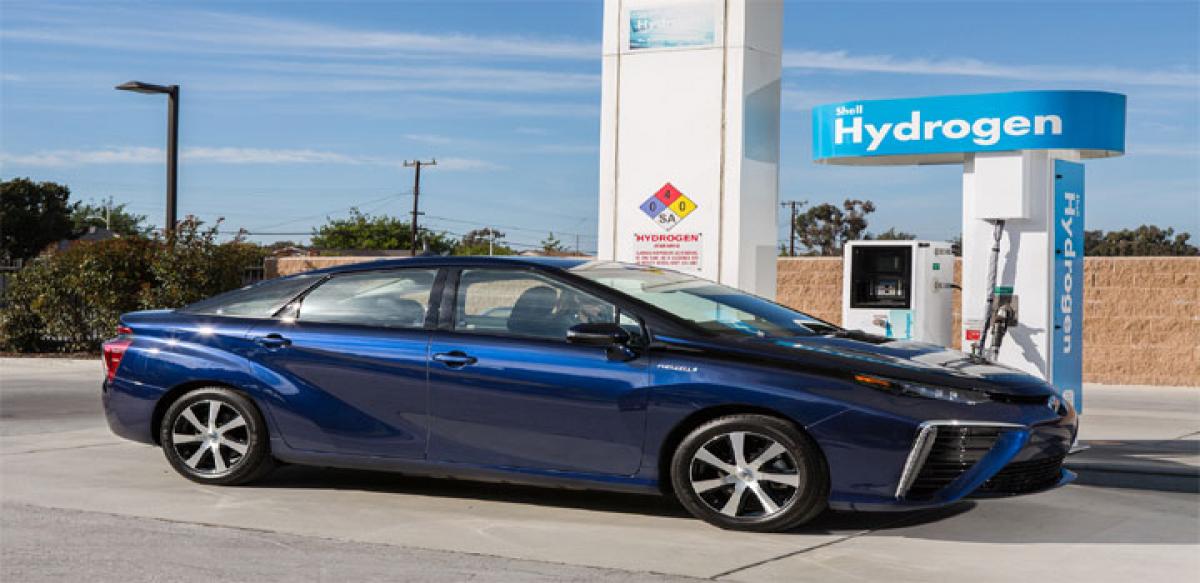Live
- Why India without quality, inclusive higher edn has reasons to worry
- San Francisco’s Financial District Reinvents Itself
- Bookshelf
- Bridging Indian Literatures Through Translation
- Kartika and Rudra
- Building a creative economy: Reviving heritage, empowering communities
- BJP Leaders Meet TPP Chairman to Address Irregularities in TIDCO Housing Scheme
- Telangana Sets Record in Rice Yield with 15.3 Million Metric Tons
- Spirituality in the leadership
- Actor Kasthuri Shankar Arrested in Hyderabad Over Controversial Remarks
Just In

Getting a step closer to making hydrogen a less expensive fuel for cars, scientists have upgraded an inexpensive catalyst that can release four times more hydrogen from water than in its original form.
.jpg)
New York: Getting a step closer to making hydrogen a less expensive fuel for cars, scientists have upgraded an inexpensive catalyst that can release four times more hydrogen from water than in its original form.
The upgraded catalyst -- molybdenum disulfide or 'molly' for short and nearly as cheap as dirt -- can replace the expensive platinum that costs a whopping $1,500 a gram.
An additional benefit is that molly's action can be triggered by sunlight, a feature which eventually may provide users an off-the-grid means of securing hydrogen fuel.
Hydrogen fuel is desirable because, unlike gasoline, it doesn't release carbon into the atmosphere when burned. The combustion of hydrogen with oxygen produces an exhaust of only water.
Not requiring electricity to prompt the reaction may be convenient in some circumstances and also keep costs down."A molly catalyst is essentially a 'green' technology. We used sunlight for the experiment's motive power.
The light is processed through a dye, which harvests the light," said lead author Stan Chou from Sandia National Laboratories. "A photocatalytic process stores that energy in the chemical bonds of the liberated hydrogen molecule.
It's a kind of photosynthesis, but using inorganic materials rather than plants," Chou said. However, co-author Bryan Kaehr cautioned that what has been established is a fundamental proof of principle, not an industrial process.
"Water splitting is a challenging reaction. It can be poisoned, stopping the molly reaction after some time period. Then you can restart it with acid. There are many intricacies to be worked out," Kaehr said.
"But getting inexpensive molly to work this much more efficiently could drive hydrogen production costs way down," he added.

© 2024 Hyderabad Media House Limited/The Hans India. All rights reserved. Powered by hocalwire.com







